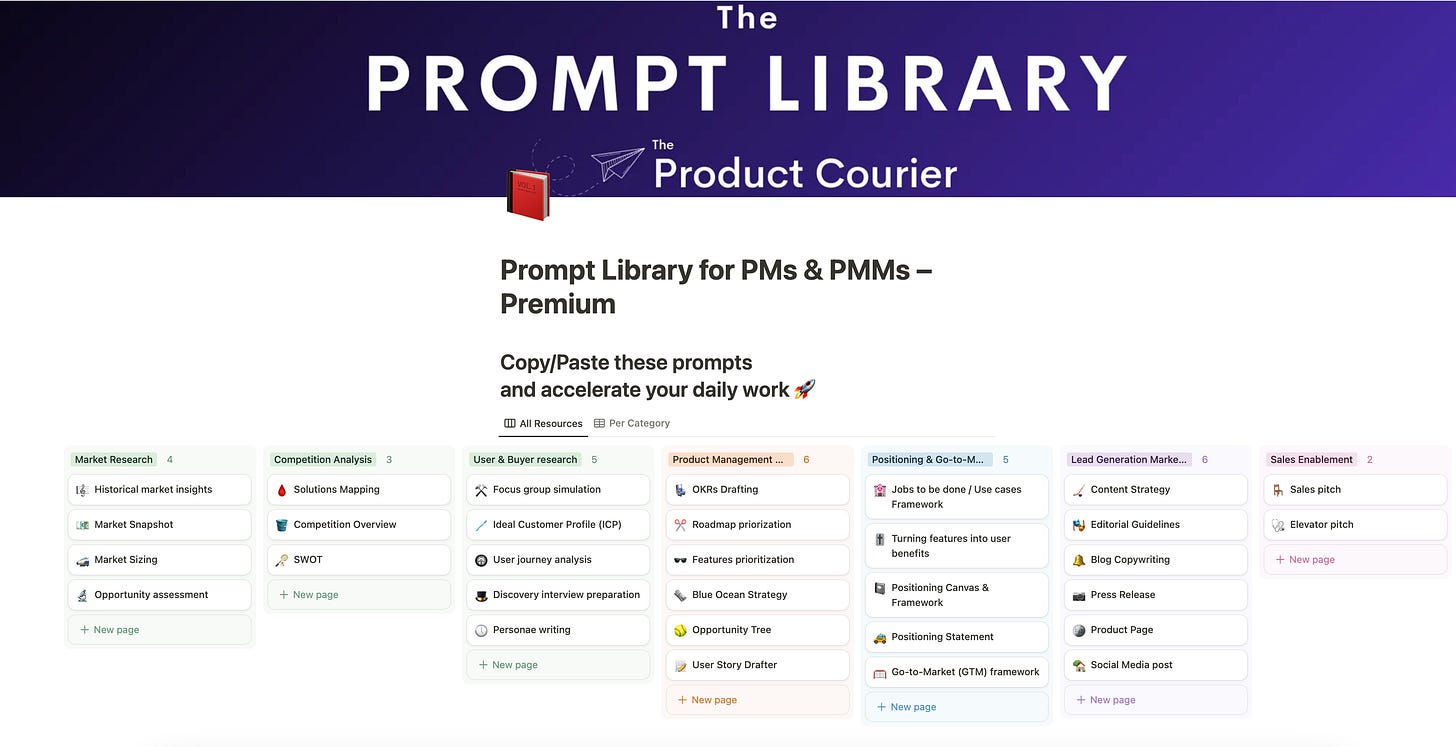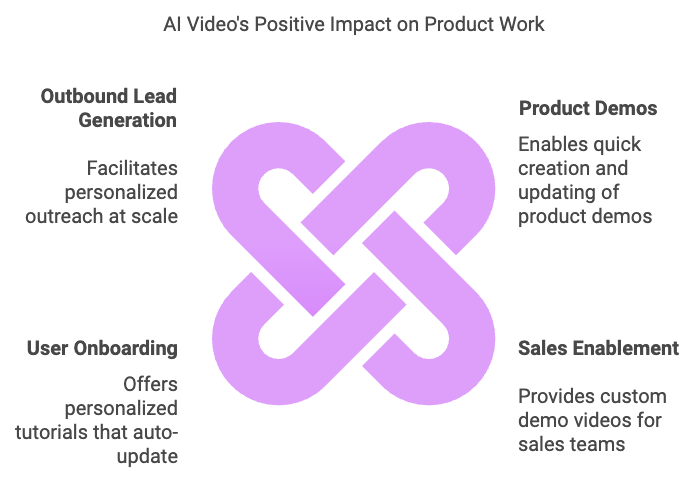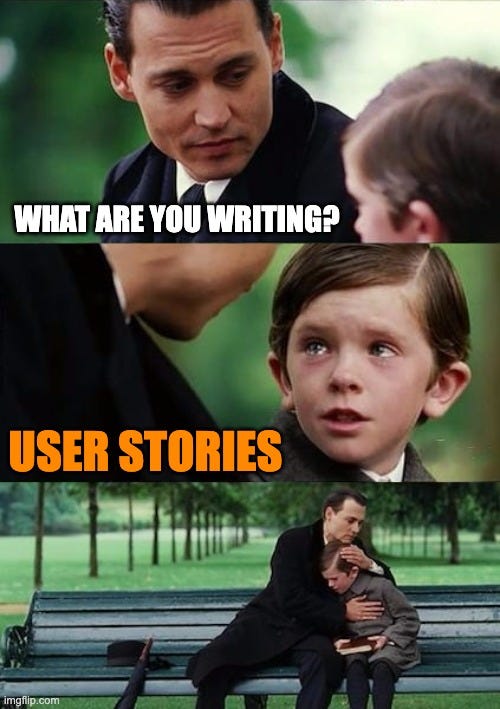Let AI write your user stories🤓
Focus on starting conversations around user stories and let AI do the boring part.
Thank you for reading The Product Courier.
We’re now 1,808, which is 176 more than last month! 🙏🏻
If you're new here, welcome!
I’m Toni, I help B2B companies launch products people want to buy in weeks, not months.
👉🏻 Let’s connect on Linkedin.
With Lucas, my fellow Product Marketing Freelancer, we share actionable tips to help you deliver better work and accelerate your career by leveraging A.I. and other tools.
In this 30th edition, I will discuss :
Generative AI video for product teams,
How to leverage AI to write user stories.
Happy reading!
News of the week. 📰
Google Vids is out - the future of video is here.
Google just opened access to Vids, their AI video creation app.
You can build video presentations from text prompts in minutes.
And if you're like most Product people I talk to, you probably think: "Great, another AI tool to add to the pile..."
Although the product itself is not revolutionary ( think of Veed.io or Pictory that have been around for a long time), it’s a big move from a major platform.
And I believe it tells us something about the trend around innovation with video.
The challenge with video creation
Video is a great medium – but it takes lots of resources to create.
It is often limited to companies with big budgets because :
Too expensive to outsource.
Too time-consuming to make in-house.
It takes forever to update when the product changes.
What is changing?
The new wave of AI video tools (Google Vids, Heygen, Synthesia, Opus Clip...) approaches this differently:
Write a script, and instantly get a video.
Create an AI avatar that speaks your lines.
Generate professional animations in seconds
Cut and edit long-form videos into bite-size shorts automatically
Edit and update in minutes, not days.
For example, with zero video editing experience, I built a very effective ad video for the launch of buska:
Why it’s an opportunity for PMs.
Video creation is the next AI breakthrough.
LinkedIn is pushing for video content and other platforms are doubling down on video content - this is no coincidence.
This goes beyond just making pretty videos: smaller teams can now compete with enterprise-level video production. And I believe product teams can benefit from this.
Here are 4 ways AI video can positively impact product work:
Product Demos
Create and update product demos without depending on anyone else.
Create demos in minutes, not days
Update all videos when your UI changes
No more waiting for design or video teams
Sales Enablement
Your sales team gets custom demo videos for each prospect without taking your time.
Generate custom demos for each market segment
Update all sales content in one click
Keep demos always in sync with the product
User Onboarding
Users get personalized tutorials that always match your latest features.
Make tutorials in any language
Test which explanation style works best
Scale user education without outsourcing.
Outbound lead generation
Create personalized outreach video messages at scale
Record one video template, and generate hundreds of personalized versions.
Each prospect gets a video addressing their specific company needs.
AI avatar speaks their language in perfect lip-sync.
These aren’t futuristic views. You can already do all of this.
Product teams that leverage AI Video will have an unfair advantage in user education, stakeholder alignment, and market presence.
Would you consider AI videos for your communication?
Tired of going back and forth on ChatGPT and getting generic predictable answers? 🙄
Check out our Prompt Library.
27 hand-crafted and tested prompts for every Product & Marketing use case.
Our Community Poll. 📊
Your weekly tutorial. 🧰
Let AI write your user stories ✍🏻
“The real goal of using stories is shared understanding.” - Jeff Patton
✅ User stories are inherent to most Product Managers’ jobs.
✅ But let’s face it, writing them down is the most valuable part of our day-to-day.
✅ With the right prompt, AI can reduce story writing time by 70%
✅ The goal is to ideate and create conversations to improve.
Let's face it: in 2024, user stories are both essential and tedious for Product Managers.
Writing good user stories requires:
Deep user understanding
Technical knowledge
Clear writing skills
Attention to detail
Hours of focused work
Yet as Jeff Patton reminds us in "User Story Mapping", stories are meant to be conversation starters, not comprehensive specifications.
The purpose of user stories.
User stories are incredibly helpful, but I’ve seen so many times stories being turned into documentation burdens instead of being tools for improved collaboration.
The result? We spend hours on formatting and refining technical sentences empty of meaning, instead of focusing on user value and strategic decisions.
I have been there:
Spending hours on PRDs and writing concise and clear user stories.
The team finds gaps during refinement.
Stakeholders ask for format changes.
New requirements force rewrites... 🙄
Repeat 🔄
It would often end up:
❌ Rushing through story writing, missing potential relevant details
❌ Spending excessive time on formatting and wordsmithing
❌ Delaying sprint planning waiting for perfect stories
❌ Skipping important discussions due to time pressure
Then came AI.
Because they are text-based and rooted in technical requirements, user story prompts quickly became a must for PMs trying to get ahold of ChatGPT.
Many (free and paying) AI user story generators popped up online, with a debate between:
👍 "AI will free PMs from tedious writing"
👍 "Finally, consistent high-quality stories"
👍 "No more missing edge cases"
and
👎🏻 "Stories need human insight"
👎🏻 "AI produces generic outputs"
👎🏻 "We'll lose valuable team discussions"
Both sides make valid points. Where do we stand?
In my opinion, AI is a threat to bad product managers whose job solely consists of writing extensive technical documentation no one reads.
Great PMs use AI to do the heavy lifting or to ideate and challenge ideas.
With this in mind, let me show you how I approach AI user story writing to save hours and improve my requirements.
I’ll use a real-life example of a feature I worked on during my time at Lemlist:
inbox rotation.
1. Prepare your Product requirements.
First, you need to feed AI with the information about your product/feature.
Sharing your Product Requirement Doc (PRD) is best.
If you don’t have one yet, list the detailed elements of your product (Problem, Objectives, Scope, Audience, Functional Requirements, Success metrics…)
👉🏻 You can get the Product School PRD template here.
2. Enter the “User Story Drafter” prompt.
Copy-paste my prompt into your favorite AI assistant.
This kind of prompt works best with ChatGPT-4o Canvas or Claude 3.5 Sonnet.
The User Story prompt is available in our prompt Library! Get it on Gumroad. PS: If you subscribe annually to The Product Courier, you get instant access to this prompt library + over 30 tutorials + a Q&A with us every quarter.
Keep reading with a 7-day free trial
Subscribe to The Product Courier to keep reading this post and get 7 days of free access to the full post archives.







